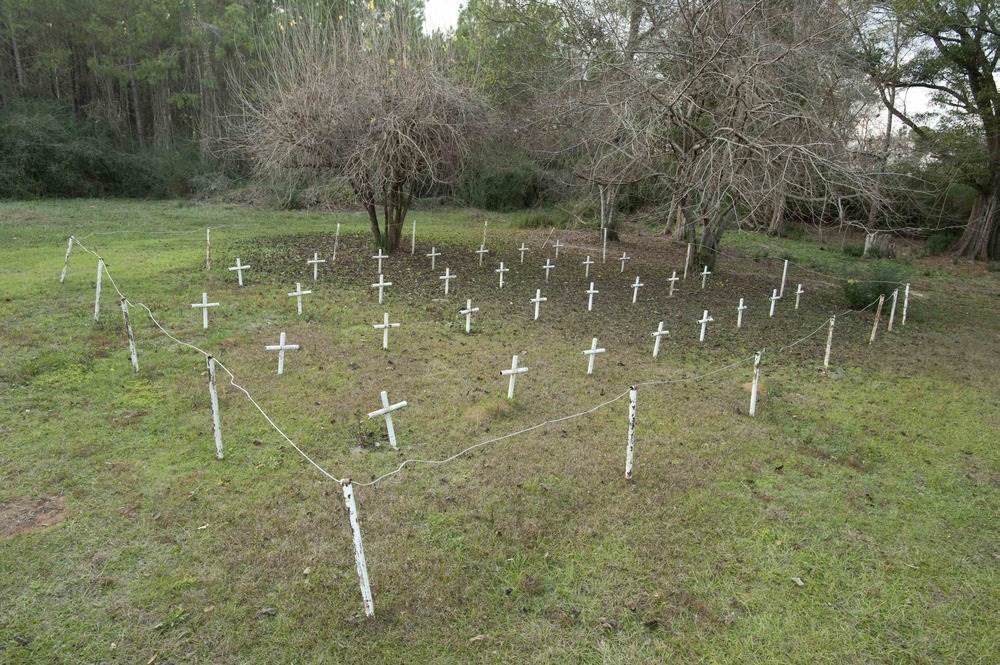
Emotion drenched the first meeting last week in Marianna of the state task force charged with deciding how Florida memorializes dead boys who possibly endured unspeakable depravity at the shuttered state-run Arthur G. Dozier School for Boys.
For two years, University of South Florida researchers scoured the nearly 1,400-acre grounds. Their sleuthing unearthed 51 sets of remains dumped in the Boot Hill Burial Ground. Researchers identified 21 bodies rescued from obscurity from the unmarked graveyard.
With marching orders from the Legislature, the task force gathered to brainstorm plans for a memorial to honor kids forgotten at the Jackson County school ostensibly in the business of reforming wayward boys from 1900 to 2011.
Ideas dueled. One stood out — but not in a good way. Task force member Eric Hill, a Jackson County commissioner, and others suggested more people would encounter a memorial and permanent burial site located elsewhere.
“I think the location would be best fit with a larger population,” Hill said.
Stephen Britt, whose uncle Dozier claimed in 1946, called BS.
“They want it to be totally eliminated. They don’t want any reference of it being here,” he said, pronouncing the skull session “a farce,” before apologizing, according to The News Service of Florida.
His mea culpa might be premature — if regional officials have their way.
The task force meets Aug. 19 to begin voting on a Dozier memorial. Seriously considering plans to erect off-site a memorial to boys allegedly abused to death under state custody screams farcical.
No one ever would have greenlighted locating the National September 11 Memorial & Museum — the complex at the World Trade Center site that honors both the half-dozen killed in the 1993 bombing and the nearly 3,000 souls murdered in the 9/11 attacks — in Flatbush.
Similarly, David Jackson, a Florida A&M University historian and a task force adviser, concluded a memorial dislocated from Dozier would be “very unusual.”
Rather, a memorial ensconced there “gives us an opportunity to continue to teach people for generations to come about what’s right, what’s wrong, what should not have occurred so we won’t repeat those things going forward,” he said.
Not to mention the powerful, enduring spiritual connection of “traumascapes,” the word Australian cultural historian and author Maria Tumarkin coined to describe, “places marked by traumatic legacies of violence, suffering and loss.”
Traumascapes, whether acts of God or man-made disasters like Dozier, are “an essential part of people’s experiences of mourning, remembering and making sense of traumatic histories imprinted onto them,” she writes. They “are precisely the places that remind us that the past cannot simply be erased or, for that matter, simply reconstructed.”
In the case of Dozier, it isn’t for want of trying.
Consider after a regional septet met in January with the Florida Cabinet, The Jackson County Times wrote:
“The people of Marianna and Jackson County, having endured the last three years of bad press honorably, strongly desire to move on.…”
Hill’s suggestion channels that sentiment. Who could blame the region for longing to disinfect from the Dozier stench?
The stench of a squalid state-run facility that purportedly “reformed” young boys with leather straps applied with perverse gratification by sadistic guards in a hut dubbed the “White House” and in a gymnasium basement that doubled as a “rape dungeon.”
After recent discreet two-year probe into abuse and murder allegations at Dozier, officials, handcuffed by too little evidence and too much time passed, won’t pursue charges.
Dozier’s victims may never get justice. However, before Marianna can move on, heal, perhaps repurpose the Dozier land and celebrate “what a spectacular, beautiful place” CFO Jeff Atwater called Marianna, the lost boys should get a memorial. One ensconced on the very land that speaks directly to years of unspeakable horrors.
A plaque on the White House offers this instructive inscription: “May this building stand as a reminder of the need to remain vigilant in protecting our children as we help them seek a brighter future.”
State officials should carry those words as a compass to where a Dozier memorial rightly must go.
___
Former award-winning Orlando Sentinel columnist Darryl E. Owens now serves as director of communication at Beacon College in Leesburg, the first higher education institution accredited to award bachelor’s degrees exclusively to students with learning disabilities, ADHD and other learning differences. Views expressed are his own.



